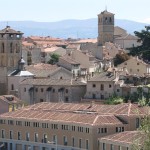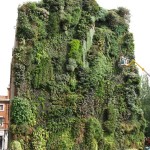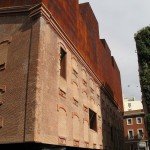Last week I was in Madrid for 4 days.
It isn’t too surprising that the first piece of ‘local’ architecture I experienced was the relatively new Terminal 4 at  Barajas-Madrid Airport.
Actually completed in 2004 the new Terminal along with it’s associated Satelitte terminal were not opened until 2006.
The terminal was designed by Antonio Lamela and Richard Rogers, and like a number of recently completed airports has an amazing sense of space.
One thing I found particularly interesting once I started researching the airport is that it was the Worlds 11th Busiest Airport in 2008 – something I found hard to believe as it was a virtual ghost town the day I arrived. Though more surprising was the fact that in the last 24 months I have passed through 10 of the top 13 busiest airports!
A couple of side notes:
- My camera has a panaramic function but no sticthing software (work that one out!) So I searched the Internet and found AutoStitch – which I used to compile the picture above (make sure you open up the full image) The image is actually constructed of 14 photos with the righthand end having two rows of images. I was amazed to fine AutoStitch managed to compile them all together automatically – I didn’t even need to assemble them in a rough order!
- The architecture of the airport interested me to the extent I wanted to see how effectively I could model it in ArchiCAD with some of the Tools we develop – check out the results here.


























